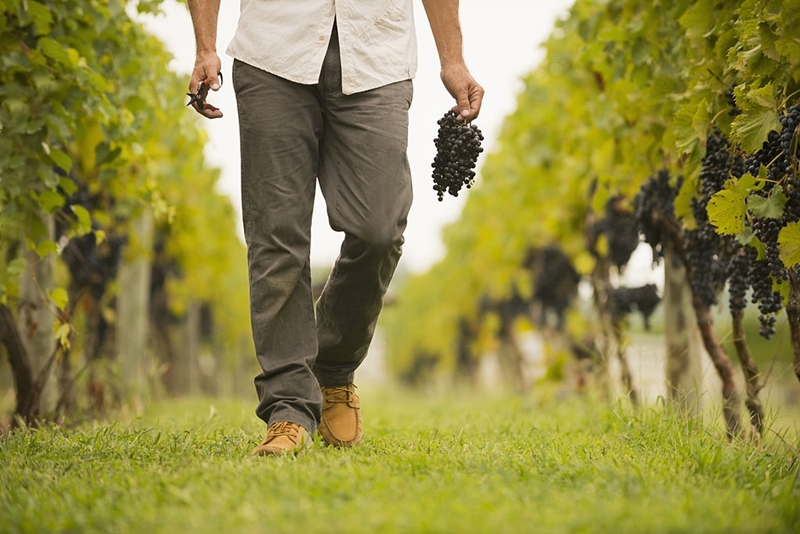The underlying secrets of a great wine: unveiling the role of soil in viticulture
The subterranean factors that craft a great wine

In the intricate journey of winemaking, the adage "wine is made in the vineyard" rings especially true. This truism underscores the pivotal role of the vineyard's soil in shaping the final characteristics of wine. Indeed, the soil is not merely a foundation but a dynamic source of nourishment for the vines, imprinting its unique signature on the grapes and, consequently, the wine.
Understanding the soil's influence is so critical in modern viticulture that it is considered a key piece in the puzzle of crafting fine wines. Each vineyard's soil, or "pago," contributes specific characteristics that define the grapes grown there. But what lies beneath a vine, and why is it so crucial?
The vine's roots, which delve deep into the earth, encounter distinct layers of soil, each playing a unique role:
- Stones: Right under the vine, a layer of various-sized stones, ranging from pebbles to sand, helps retain heat at the surface and reflects sunlight back onto the vine. Fertilizers are often applied here, along with small mounds of sand or stones to protect and support the vine, especially in windy areas.
- Topsoil: Beneath the stones lies a layer rich in organic and mineral matter, typically 15-30 cm thick. This fertile layer, teeming with roots, many of which are small and horizontal, is crucial for the vine's sustenance.
- Subsoil: Below the topsoil is the subsurface layer, a horizontal stratum of weathered rock that provides stability and anchors the vine's primary roots.
- Parent Rock: In deeper layers, the parent rock, only penetrable by roots if porous or cracked, lies below. This layer, devoid of nutrients, is breached only for water access if needed.
- Water Table: The deepest layer, where rock is saturated with groundwater, can be a vital water source for the vine if not too far from the surface.
The composition of these layers significantly influences the quality of grapes, varying based on the resources available to the plant.
However, soil alone is not the sole determinant. Other variables, closely related to soil composition, also play critical roles in grape quality. Key among these are:
- Temperature: Soil temperature, more than air temperature, triggers vine budding and affects grape acidity. It depends largely on soil water content or, more broadly, on drainage.
- Drainage: Perhaps the most crucial variable, effective drainage leads to warmer soil, while poorly drained, moist soil remains cool. Drainage depends on soil particle size, with larger particles facilitating better drainage.
- Particle Size: Larger soil particles ensure better drainage and warmth. Soil types, based on particle size, range from stones and gravels to sands, silts, and clays. Rocky soils offer excellent drainage and warmth but retain fewer nutrients, necessitating more fertilization. Conversely, clay soils retain more water, making them cooler and potentially stressing vines during droughts.
- Chemical Composition: The soil's chemical elements and their proportions profoundly affect grape and wine characteristics. Elements like iron, calcium, magnesium, clay, silicon, and humus each contribute uniquely to the wine's color, aroma, acidity, body, and overall balance.
- pH Level: Soil acidity, measured by pH, influences grape and wine properties. Alkaline (basic) soils, typically younger, produce wines with lower acidity, beneficial for certain grape varieties and young wines. Older, acidic soils require longer grape maturation and yield wines suitable for aging.
- Vine Density: The number of vines per hectare and their spacing impact wine quality. Fewer vines per hectare theoretically means higher grape quality due to more generous resource distribution.
- Vine Distribution: The planting pattern also affects grape quality, as regular spacing ensures uniform resource distribution and grape quality.
In summary, the interaction of these factors underlies the complexity and quality of wine. The best soils balance moderate drainage with modest organic matter. Different soil types excel in different climates: clay soils in warm, dry areas; well-drained limestone in hot, rainy climates; gravelly soils with moderate drainage in cold regions; and well-drained slate soils in cold climates.
The understanding and manipulation of these variables by vintners and viticulturists are what transform a simple grape into an extraordinary wine, revealing the profound truth that indeed, great wine is made in the vineyard.
Founded in 2007, Vinetur® is a registered trademark of VGSC S.L. with a long history in the wine industry.
VGSC, S.L. with VAT number B70255591 is a spanish company legally registered in the Commercial Register of the city of Santiago de Compostela, with registration number: Bulletin 181, Reference 356049 in Volume 13, Page 107, Section 6, Sheet 45028, Entry 2.
Email: [email protected]
Headquarters and offices located in Vilagarcia de Arousa, Spain.